‘Monarch: Legacy of Monsters’ VFX Team on Bringing Godzilla, Mother Longlegs and New Titans to Life
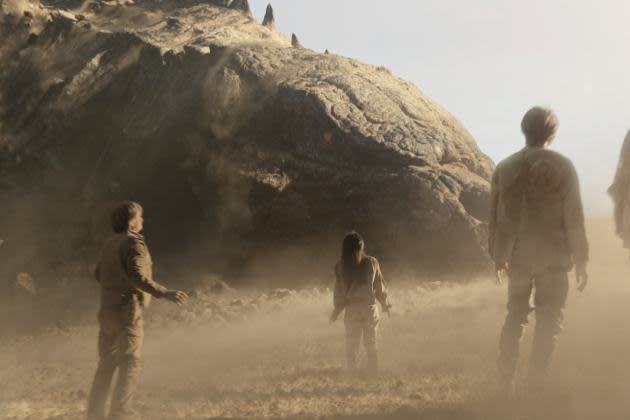
VFX supervisor Sean Konrad was tasked with bringing to life some iconic titans back for Apple TV+’s ten-part series “Monarch: Legacy of Monsters.” Among them are “Kong: Skull Island’s” Mother Longlegs and Godzilla, as well as some new monsters, including a crab-inspired titan and star-mole beast.
Showrunner and co-creator Chris Black had always wanted to open the series on Skull Island to root the viewer in familiarity without having to rewatch past films. The opening episode sees Bill Randa (John Goodman) being chased through a bamboo forest that opens out onto a rock peninsula before Mother Longlegs emerges. Moments later, a giant rock crab creature known as Mantleclaw comes out of the ground, and a battle between the two monsters begins. For Black and Konrad, it was a way of paying homage to the MonsterVerse lore and allowed them to draw from the Hawaiian location.
More from Variety
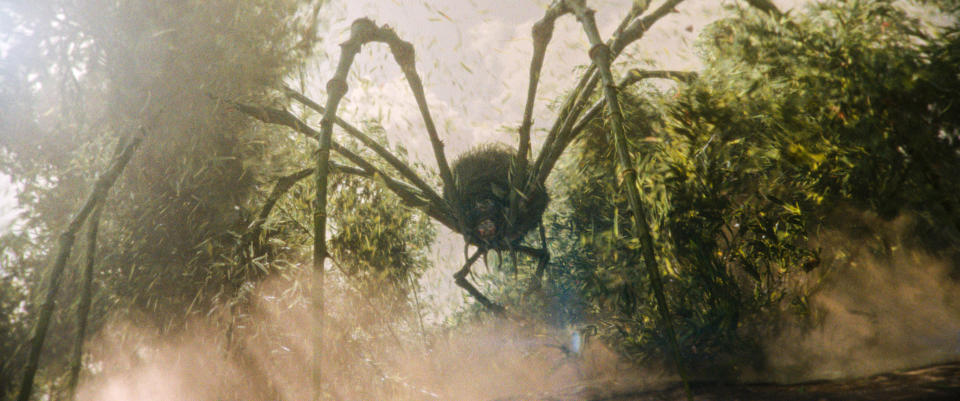
As for design, Konrad revealed that Mantleclaw was inspired by another creature from the MonsterVerse.
“It feels like it’s an evolutionary offset of a creature, but we modified it to fit into the terrain,” Konrad explained. “Its body is almost like volcanic rock.”
To pull it off, there was a hybrid of real rocks and CG. “We shot real plates for the background and tried to get as many real pieces as possible,” Konrad said. “This beautiful volcanic rock peninsula, it’s not next to a bamboo forest, so we put a little bit of a bamboo forest in behind them whenever we’re looking in the reverse direction.”
Additionally, they were dealing with the weather constantly changing while they were “trying to look at the rock landscape through a drone.” While they had to pull off the crab vs. spider fight, they also had to work on invisible effects and clean wires out of the background. “That scene was probably 60 shots, and we had 18 weeks to work on it.”
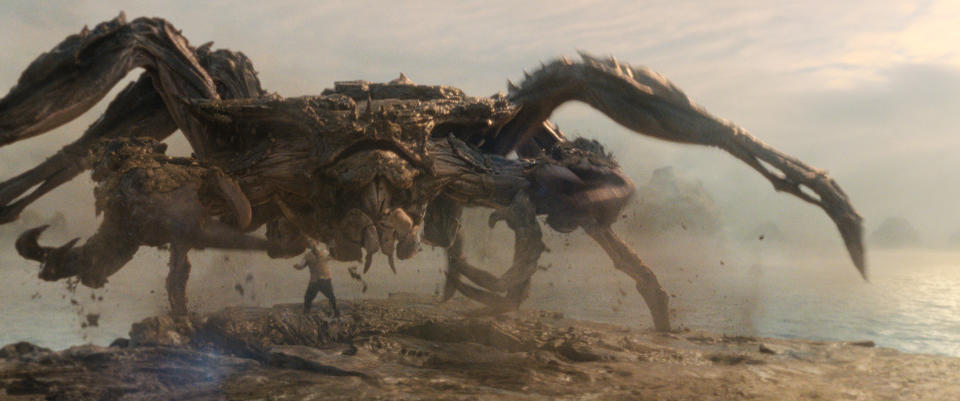
Frost Vark, another new titan, makes an appearance in Episode 3 and is a mole-like creature inspired by the star-nosed mole. Executive producer Tory Tunnell explained, “The Frost Vark concept began with a bunch of brainstorming sessions born of researching actual and lesser-known creatures on our planet for inspiration. We’d grimace and squeal as we’d review a series of horrifying and bizarre insects, reptiles and more that felt like they were out of the brain of a twisted artist rather than mother nature.”
Konrad revealed an additional detail about how the brainstorming session went one step further: Co-creator Matt Fraction’s son had been tasked to research weird animals and he had to write up a 250-word summary of the monster and give it back to Matt. Fraction’s son wasn’t just rewarded his allowance, he was the mastermind behind the lore’s newest titan — and a ghastly-looking one too.
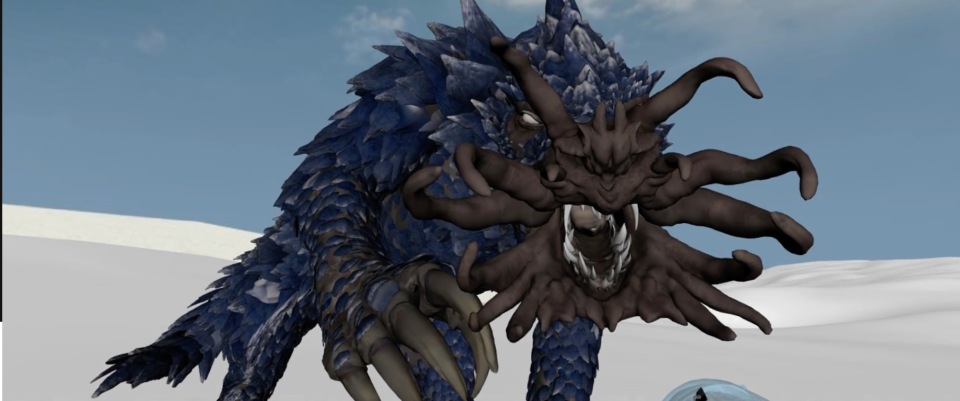
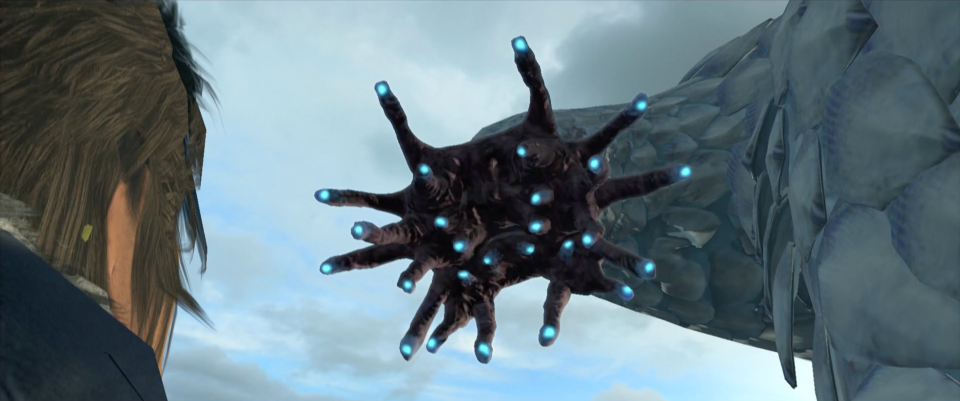
The VFX team adapted its physiology to the monster’s icy glacier home. Tunnell explained, “By exponentially growing its size, we dreamt up a new destructive force that was unique to this monster in our cannon – where our monster sucks the heat out of the victim – be it a fire or a human pulse, leaving its subject completely frozen.”
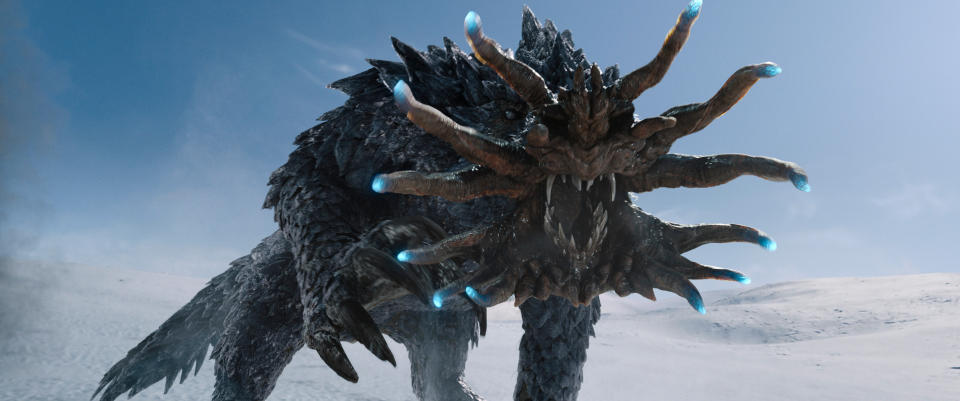
The latest episode of the series sees Godzilla’s return and answers many theories as to his whereabouts. Last seen in 2014 swimming out of the San Francisco Bay, many wondered where he went. But it turns out, Hiroshi Randa had activated a device that emitted gamma signals and Godzilla emerged from the ground in Algiers Dessert in 2015.
Said Konrad, “In general, we tried to tie his design and animation to the look established in the feature films, albeit with some extra wetness or covered in dust when it was appropriate for the scene. Godzilla has two looks that follow his looks from the feature films. In our 1950s timeline, his dorsal fins are spikier, and after the damage he sustained in the 2014 film, his fins regrew back with more curvature, so we see that in our ‘modern’ 2015 timeline.”
Konrad explains that Episode 6 stylistically grounds the view of Godzilla as much as possible in a subjective human perspective. He said, “Our cameras rarely go above the ground level, and if we did an objective shot, we tried to earn that by making its movements something that a drone or a helicopter could do, and only after we’d already established the size from the human scale.”
“We want the audience to experience the immensity from our character’s point of view to keep them part of the action.”
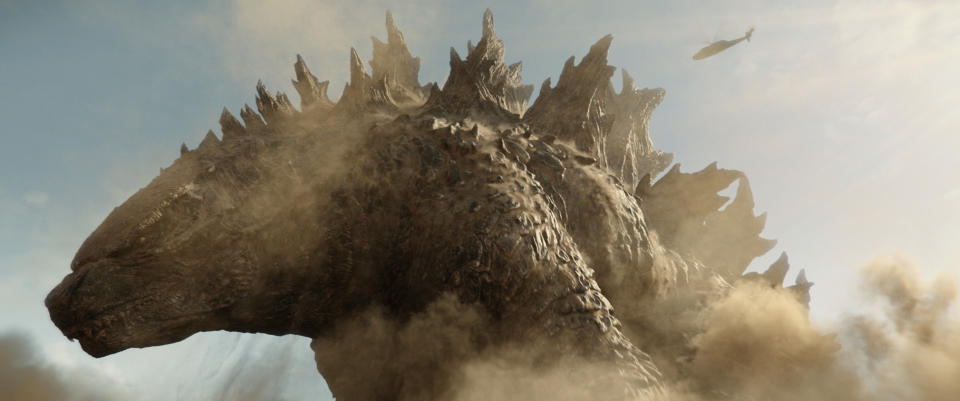
Best of Variety
Sign up for Variety’s Newsletter. For the latest news, follow us on Facebook, Twitter, and Instagram.


